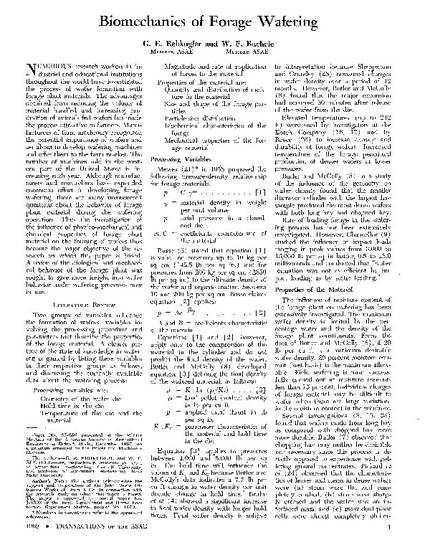
Numerous research workers in industrial and educational institutions throughout the world have investigated the process of wafer formation with forage plant materials. The advantages obtained from reducing the volume of material handled and increasing production of animals fed wafers has made the process attractive to farmers. Manufacturers of farm machinery recognized the potential importance of wafers and set about to develop wafering machines and offer them to the farm market. The number of machines sold in the western part of the United States is in-creasing each year. Although manufacturers and researchers have expended enormous effort in developing forage wafering, there are many unanswered questions about the behavior of forage plant material during the wafering operation. Thus the investigation of the influence of physicomechanical and chemical properties of forage plant material on the forming of wafers thus became the major objective of the research on which this paper is based. A union of the biological and mechanical behavior of the forage plant was sought to give more insight into wafer behavior under wafering processes now in use.
Available at: http://works.bepress.com/wesley_buchele/5/

This article is from Transactions of the ASAE 12, no. 1 (1969): 1–8.